- 翰林提供学术活动、国际课程、科研项目一站式留学背景提升服务!
- 400 888 0080
2018HiMCM B题及思路-Cozy Smart House
2018HiMCM B题同步COMAP官网发布
2018年HiMCM B题全文
2018HiMCM B题参考思路于1日内发布,请参考2018HiMCM免费辅导
No one wants to spend more money than necessary on heating and air conditioning. But, everyone wants to be comfortable and cozy while at home. The development of programmable thermostats was an initial effort to assist in reducing energy costs. With a programmable thermostat, you can manually preset a schedule of temperature increases and decreases for weekdays and weekends, and day and night periods, to keep your home cool or warm when needed, but save energy when not needed. Any adjustment to the schedule requires a manual change at each thermostat.
With the increasing use of remote control systems and mobile apps, there are many home climate control programs that allow you to adjust your home heating and/or air conditioning systems remotely using your smart phone or computer. With the first generation of these "smart home" systems you can adjust your heat system or air conditioner from anywhere (via a mobile app or online site) to save energy while away, and have your house warm or cool when you arrive home. The next generation of systems "learns" from your behaviors. After some number of days of your behaviors, and manual thermostat changes, the system learns when to lower or increase the temperatures. If your schedule changes, you can override these thermostat adjustments manually either at the actual thermostat or remotely on a mobile device. If your schedule is irregular, or if you have several people living in the house with irregular schedules, many manual changes might be required.
Consider the future generation of smart home climate control systems that will automatically and appropriately adjust the temperature of your house in response to your departure and in anticipation of your arrival no matter how irregular your schedule. Consider that a smart climate system should be able to incorporate some measure of ambient outside temperature variations, as well as geographical/regional conditions such as humidity, allergens (e.g. dust mites, pollen, mold), and air pollution levels. Also, consider the system should integrate your preferences for temperature (day, night, weekday, weekend) and other factors, such as humidity and air purity levels. Finally, consider system requirements if more than one person is living in your home or apartment (family members or roommates).
1. To begin, assume that you live in a small home or apartment with only one thermostat (one heating/cooling zone)
a. Model a potential next generation smart home climate control system. Develop an algorithm or algorithms for this system to perform the functions described above. Discuss how your system works.
b. Discuss the potential benefits and possible issues with your system, and compare your system with at least two other smart home climate control systems currently in use.
2. Describe and discuss how you would make changes to your system for a larger home with additional thermostats to control several heating/cooling zones in the home.
3. Write a one-page non-technical News Release describing your new system.
Your submission should consist of:
• One-page Summary Sheet,
• One-page News Release,
• Your solution of no more than 30 pages, for a maximum of 32 pages with your summary and news release.
• Note: Reference list and any appendices do not count toward the 32-page limit and should appear after your completed solution.
Glossary:
allergens - substances that cause allergic reactions
app - an application; a small specialized program used on mobile electronic devices
news release - a statement prepared for release to the public or press
online - available by means of a computer over a network
smart home system - an automation system used within a residence to control any combination of electronically connected items such as lighting, heating, air conditioning, security, appliances, and audio-visual equipment remotely
Commentary
Consortium Article
特等奖论文(全文)
Team 8506: The Future is Here: ThermostaX
Hwa Chong Institution, Singapore
Team 9247: Hands-Free Comfort, on Your Schedule
NC School of Science and Mathematics, NC, USA
HiMCM近年特等奖论文及参考书
| HiMCM | HiMCM A题 | HiMCM B题 |
|---|---|---|
| 2017 | 赛题 特等奖论文 | 赛题 特等奖论文 |
| 2016 | 赛题 特等奖论文 | 赛题 特等奖论文 |
| 2015 | 赛题 特等奖论文 | 赛题 特等奖论文 |
| 2014 | 赛题 特等奖论文 | 赛题 特等奖论文 |
| 2013 | 赛题 特等奖论文 | 赛题 特等奖论文 |
| 2012 | 赛题 特等奖论文 | 赛题 特等奖论文 |
| 2011 | 赛题 特等奖论文 | 赛题 特等奖论文 |
| 2010 | 赛题 特等奖论文 | 赛题 特等奖论文 |
| 2009 | 赛题 特等奖论文 | 赛题 特等奖论文 |
| 2008 | 赛题 特等奖论文 | 赛题 特等奖论文 |
美国数学建模学术活动题解析一 |
美国数学建模学术活动题解析二 |
美国数学建模赛题解析三 |
美国数学建模学术活动题解析四 |
美国数学建模学术活动题解析五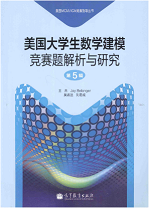 |
美国数学建模学术活动题解析六 |
数学建模的第一课 |
数学建模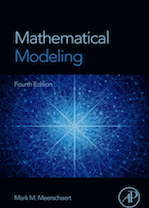 |
美国数学建模学术活动论文写作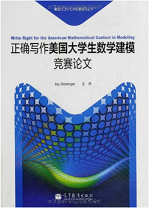 |
MCM/ICM数学建模学术活动一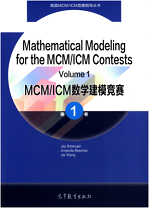 |
MCM/ICM数学建模学术活动二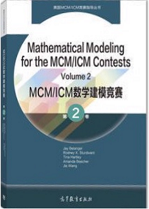 |
MCM/ICM数学建模学术活动三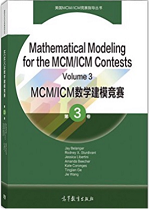 |

早鸟钜惠!翰林2025暑期班课上线

最新发布
© 2025. All Rights Reserved. 沪ICP备2023009024号-1








